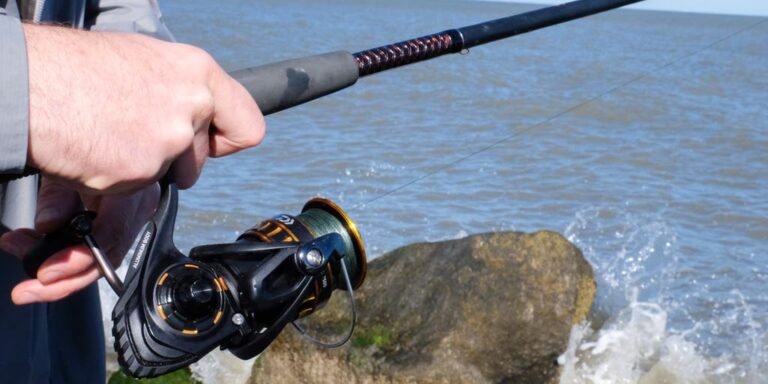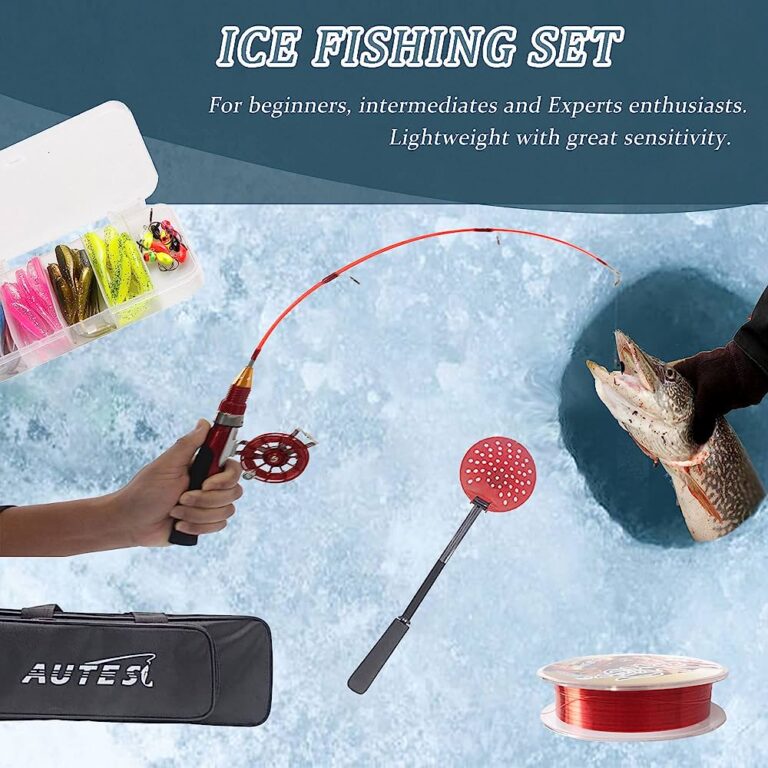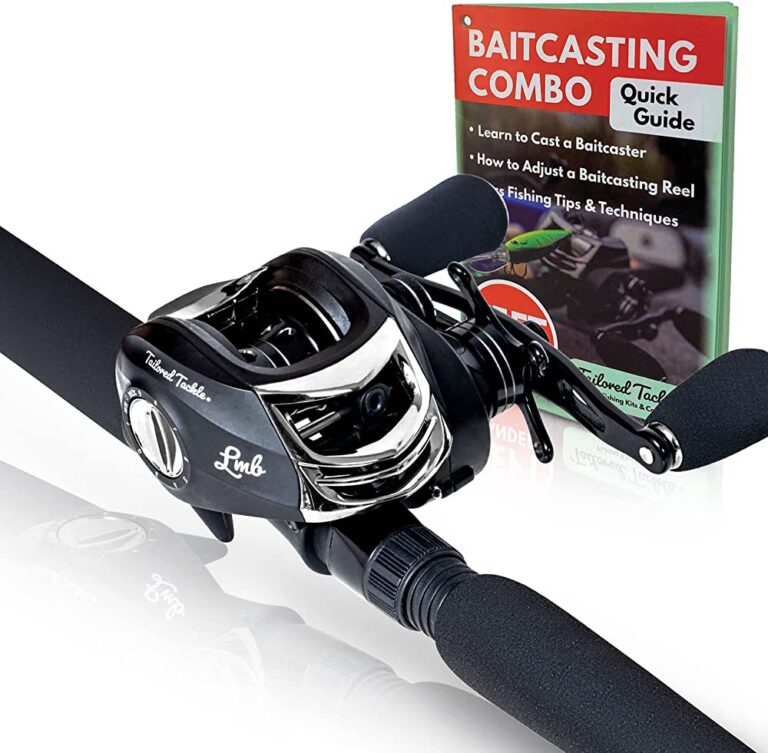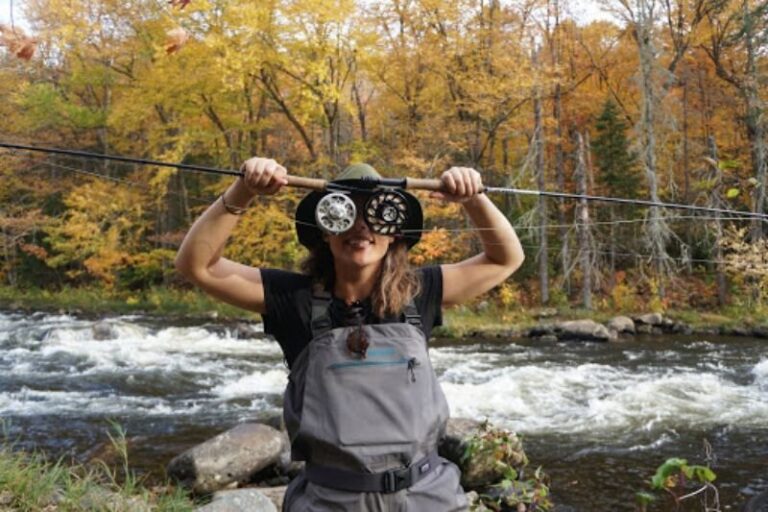To cast with a spinning rod and reel, hold the rod with both hands and flick your wrist to release the line. Casting techniques involve varying the angle, speed, and force of your wrist movement to achieve different types of casts and distances.
Fishing with a spinning rod and reel can be an enjoyable and rewarding experience. However, it can also be quite frustrating if you don’t know how to cast properly. Casting techniques vary depending on what type of fish you are trying to catch, the size of your lure, and the type of water you are fishing in.
In this article, we will explore some basic casting techniques that every angler should know. We will also discuss how to properly prepare your gear and adjust your casting technique to achieve the best results. With these tips, you’ll be able to cast like a pro and catch more fish.

Credit: blueridgemountainlife.com
Understanding The Spinning Rod And Reel
What Is A Spinning Rod And Reel?
When it comes to fishing, one essential tool for anglers is the spinning rod and reel. But what exactly is a spinning rod and reel?
- A spinning rod and reel set-up is a fishing rig consisting of a flexible rod and a reel that hangs beneath it.
- The spinning reel is mounted on the underside of the rod, and it faces downward.
- The rod typically has several guides that direct the line away from the blank and through the guides to the spinning reel.
What Are The Benefits Of Using A Spinning Rod And Reel?
Using a spinning rod and reel to fish comes with many advantages. Here are a few:
- Versatility: Spinning rods and reels can be used in freshwater and saltwater fishing, making them an excellent choice for anglers who enjoy fishing in different environments.
- Ease of use: Compared to baitcasting reels, spinning reels are easy to use, with a simple push-button to cast.
- Accuracy: You can accurately cast smaller lures and baits with a spinning rod and reel, which can result in more bites.
- Durability: Spinning rods and reels are generally more durable and require less maintenance compared to other fishing equipment.
Anatomy Of A Spinning Rod And Reel
Before you can catch fish with a spinning rod and reel, it is essential to understand the equipment’s anatomy. Here is a quick rundown of the different components:
- The grip: The part of the rod where the angler holds onto the equipment while casting and retrieving.
- The rod blank: The main body of the rod, which can come in different materials such as graphite, fiberglass, or a combination of both.
- The guides: The small rings on the rod that direct the fishing line from the spool to the spinning reel.
- The spinning reel: Mounted below the rod blank, the spinning reel houses the fishing line and allows for easy casting and line retrieval.
- The bail: The wire arm that keeps the fishing line in place before and after casting.
- The drag: The resistance used to tire out the fish during retrieval.
How To Select A Spinning Rod And Reel
Selecting the right spinning rod and reel is crucial for a successful fishing trip. Here are a few things to consider:
- Type of fish: Determine the size and type of fish you want to catch before choosing a spinning rod and reel.
- Material: Consider the material used for the rod blank. Graphite is a popular option as it is strong, lightweight, and sensitive.
- Power and action: These determine how hard it is to bend the rod and how quickly it returns to its original position.
- Size and weight: Choose a spinning rod and reel that can handle your target species and is comfortable enough for you to use for extended periods.
By understanding the importance of the spinning rod and reel, along with its benefits, anatomy, and how to select one, anglers can significantly improve their chances of catching fish on their next fishing trip. Happy fishing!
Mastering Different Casting Techniques
Casting techniques with a spinning rod and reel: mastering different casting techniques
Casting is an essential part of fishing, and mastering different casting techniques can help you catch more fish. We will discuss the three most popular casting techniques with a spinning rod and reel: basic casting, overhead casting, and sidearm casting.
By understanding the nuances and properly executing these techniques, you’ll be well on your way to becoming a more skilled angler.
Basic Casting Technique
The basic casting technique is the foundation for all other casting techniques with a spinning rod and reel. Follow these steps to execute a basic cast:
- Hold the spinning rod with your dominant hand and the reel with the other.
- Open the bail of the reel by flipping it up.
- Hold the rod at a 45-degree angle and point the rod tip in the direction you want to cast.
- Press the button on the reel while holding onto the fishing line with your index finger.
- Bring the rod back behind your shoulder while keeping the tip pointed upwards.
- Smoothly swing the rod forward, releasing your finger on the fishing line to let the bait fly towards the target.
Overhead Casting Technique
Overhead casting is more advanced than the basic cast and is used when you need to cast further or with more accuracy. Here’s how to execute an overhead cast:
- Hold the rod with both hands shoulder-width apart and make sure the reel is facing upwards.
- Use your dominant hand to grab the rod handle, and place the index finger on the inside of the rod grip.
- Hold the reel with your other hand and open the bail.
- Hold the rod parallel to the ground and bring it back above your shoulder with your elbow bent.
- Pause to aim the rod tip in the direction you want to cast.
- Rotate your shoulder and bring the rod forward, releasing the line with your finger to achieve the desired distance and accuracy.
Sidearm Casting Technique
Sidearm casting is particularly useful when you need to cast under low obstacles, such as tree branches. Here’s how to execute a sidearm cast:
- Hold the rod with both hands and rotate your wrist so that the reel is facing upwards.
- Hold the rod parallel to the ground with your hands close together.
- Bring the rod back behind you with your elbow close to your waist.
- Aim the rod tip in the direction you want to cast.
- Swing the rod forward, releasing the fishing line with your finger, and keep your wrist straight during the cast.
By mastering these different casting techniques with a spinning rod and reel, you’ll have a variety of tools at your disposal to catch more fish. Remember to practice and adjust your techniques depending on the fishing situation you’re in, and you’ll be well on your way to becoming a more skilled angler.
Conclusion
After all is said and done, mastering spinning rod and reel casting techniques is a continuous learning process that requires time, patience, and dedication. From considering your gear choice, selecting an appropriate rod and reel, and deciding on the right line and lure, to practicing proper casting techniques, every step in the process is important.
And that’s precisely why it is essential to take your time, invest in the right gear, and focus on building your skills and techniques. Ultimately, the goal should be to achieve maximum accuracy, distance, and control, as these elements will help you catch more fish and enjoy your time on the water even more.
So, keep practicing, take time to observe your surroundings, and most importantly, have fun with every cast. With the right approach, practice, and persistence, it won’t be long before you become a master at spinning rod and reel casting.





